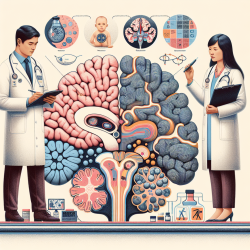Introduction
As a Special Education Director, ensuring the well-being and development of students with autism is a priority. The research article "Therapeutic Riding or Mindfulness: Comparative Effectiveness of Two Recreational Therapy Interventions for Adolescents with Autism" provides valuable insights into non-pharmacological interventions that can help manage stress in adolescents with autism. This blog explores the findings of this study and how practitioners can implement these interventions to improve their practice.
Understanding the Research
The study compared the effectiveness of Therapeutic Riding (THR) and HeartMath (HM) mindfulness-based interventions over three 10-week periods. The research focused on measuring salivary cortisol levels, self-reported stress, parent-reported social responsiveness, and heart-rate variability among 27 participants aged 12-21 years.
Findings revealed that both THR and HM interventions effectively reduced cortisol levels immediately following a session. However, HM sessions had a more significant impact on heart-rate variability, indicating better emotional regulation. THR, on the other hand, showed a greater reduction in self-reported stressors.
Implementing the Findings
Practitioners can enhance their skills by incorporating these interventions into their practice. Here are some actionable steps:
- Incorporate Therapeutic Riding: THR can be a valuable tool for reducing stress and improving social interaction in adolescents with autism. Consider partnering with local equestrian centers to offer this intervention.
- Utilize Mindfulness Techniques: Implement HM mindfulness protocols to help students develop better emotional regulation skills. Training staff in these techniques can enhance their ability to support students effectively.
- Monitor Progress: Regularly assess the impact of these interventions through self-reports, parent feedback, and physiological measures like cortisol levels to tailor approaches to individual needs.
Encouraging Further Research
While this study provides valuable insights, further research is needed to explore the long-term effects of these interventions and their applicability to diverse populations. Practitioners are encouraged to collaborate with researchers to contribute to the growing body of knowledge in this field.
Conclusion
Both Therapeutic Riding and Mindfulness interventions offer promising benefits for adolescents with autism. By integrating these approaches into educational settings, practitioners can provide holistic support that enhances students' well-being and development.
To read the original research paper, please follow this link: Therapeutic Riding or Mindfulness: Comparative Effectiveness of Two Recreational Therapy Interventions for Adolescents with Autism.










